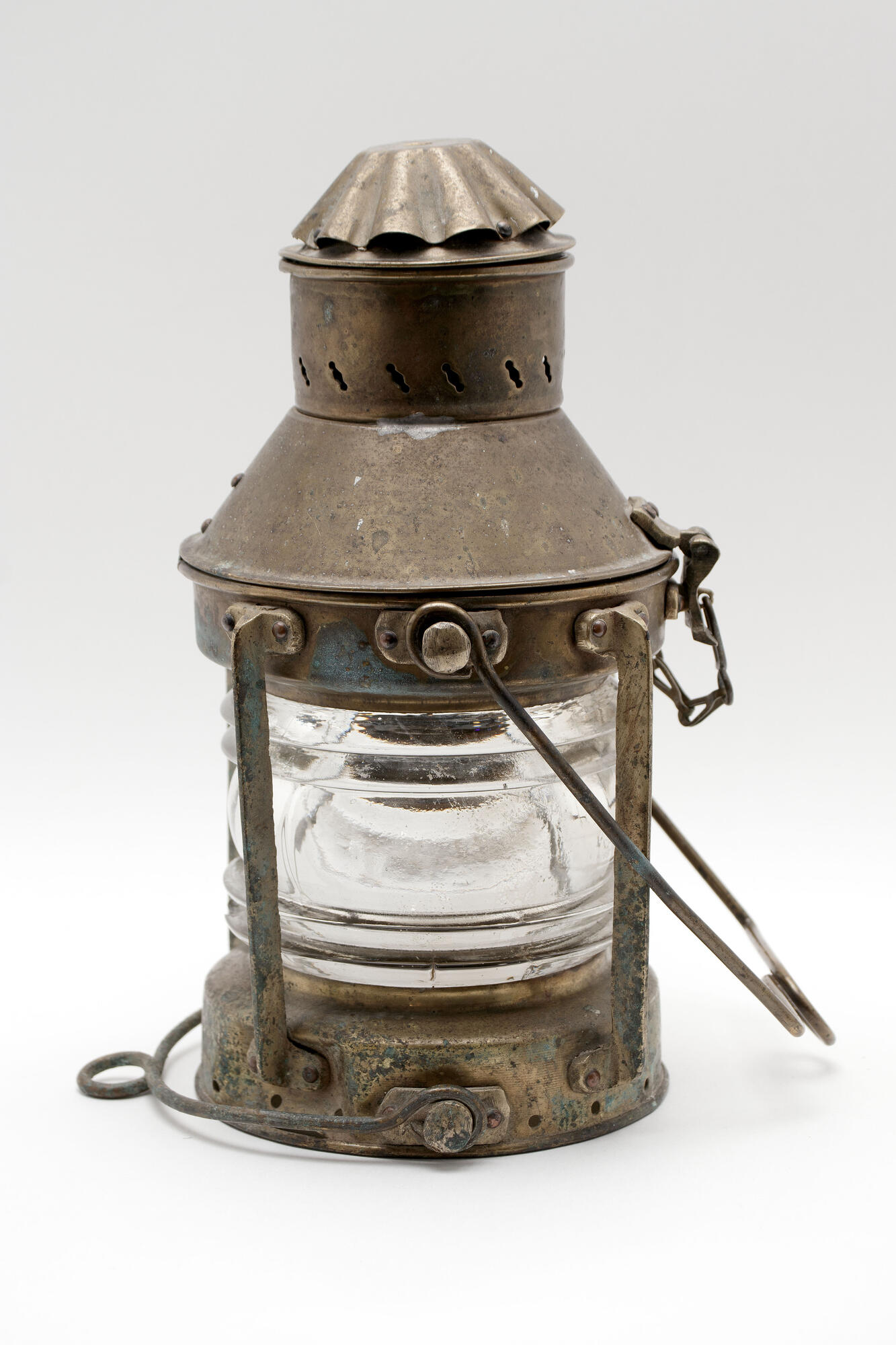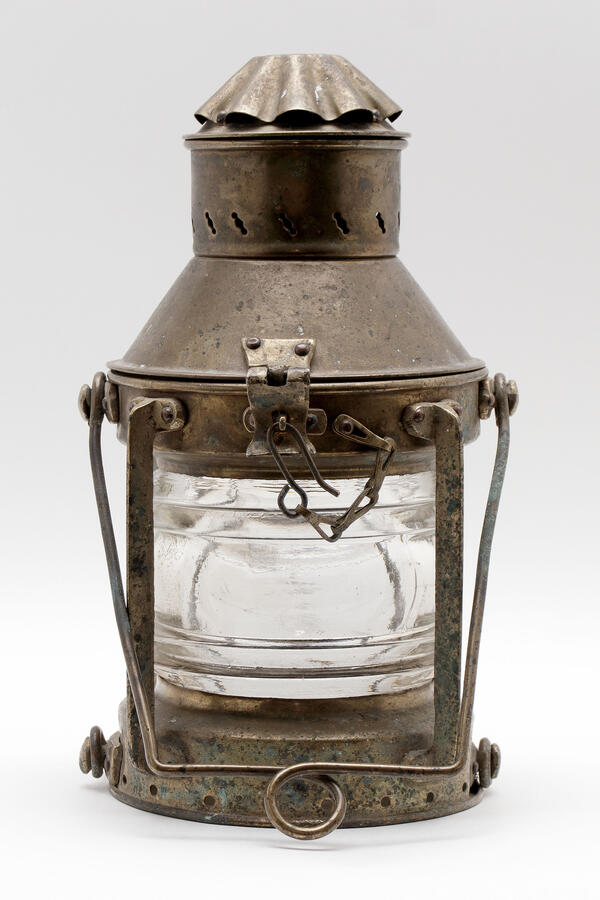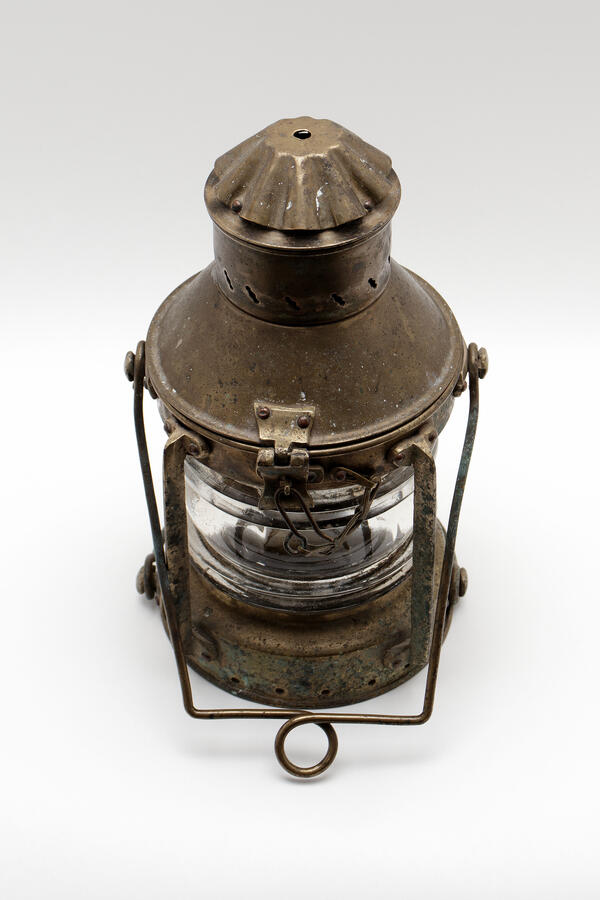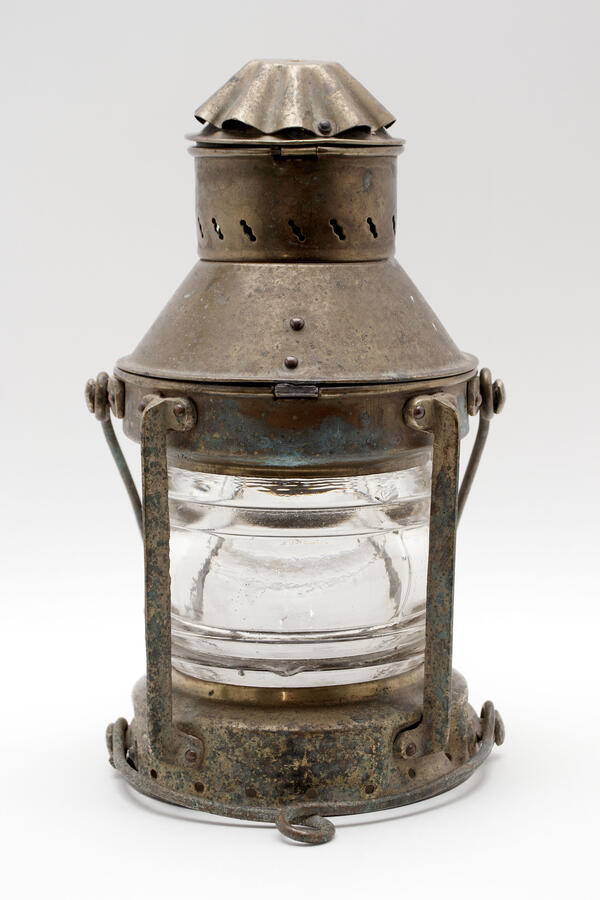This is a nautical oil lantern, which in the early 20th century was used on small ships with no electricity. Such lanterns are designed to protect the fire from wind and splashes. The glass is additionally reinforced with a metal grille.
The lantern was filled with special oil for lamps. One end of the wick was lowered into the oil and the other was securely fixed. One disadvantage of this nautical lamp compared to a kerosene one is that it is impossible to adjust the brightness of the flame.
Lanterns as a portable light source have a long history. The basic torch — a wooden stick with one end burning — can be called the first lamp. Over time, people have discovered that some resins, oils, and wax give a particularly bright glow when lit.
The developments in oil refining methods made it possible to produce new types of fuel. For the 19th century, kerosene was the main fuel. Open fire light sources were publicly available, but remained quite dangerous. Besides being a fire hazard, they also released toxic products, such as carbon monoxide, fuel vapor, and soot.
Gas lighting was widely developed in several European countries. Unlike other fuels, it was capable of illuminating large areas in cities, buildings and streets. Gas was contained in special storages and was distributed through a system of steel or copper pipes, and regulated by a simple turn of the valve. “Luminescent gas” was originally obtained from the fat of marine animals: whales, dolphins, seals. Later, coal was used for its extraction.
The development of fuels was reflected in the design of portable light sources, with each presenting its own most effective method of burning, regulation of air flow, materials to enhance the brightness of the light and reduce fuel intake. Short-lived wicks made of vegetable fibers began to be impregnated with boric acid and asbestos fibers for a bright glow and complete combustion.
For safety reasons, the flame was fenced with metal nets and glass caps of various shapes. Argand lamps were the prototype of oil lanterns. The oil in such lamps was fed to the wick by constant air pressure. This made the flame smoke less and shine brighter.





